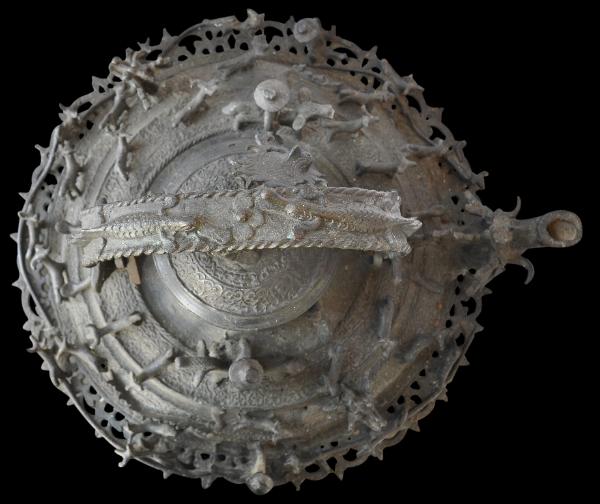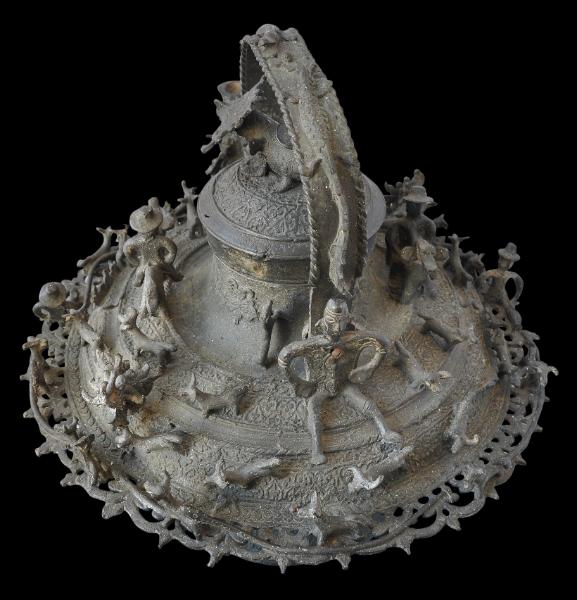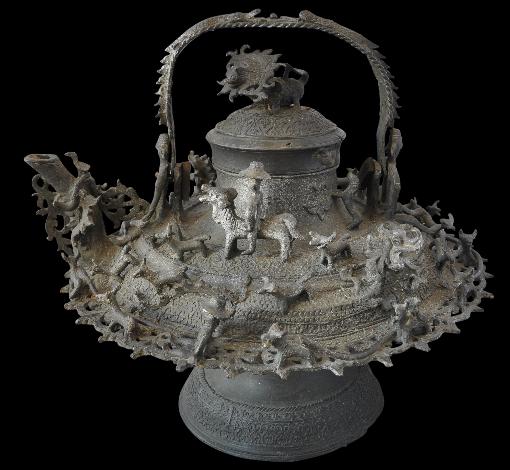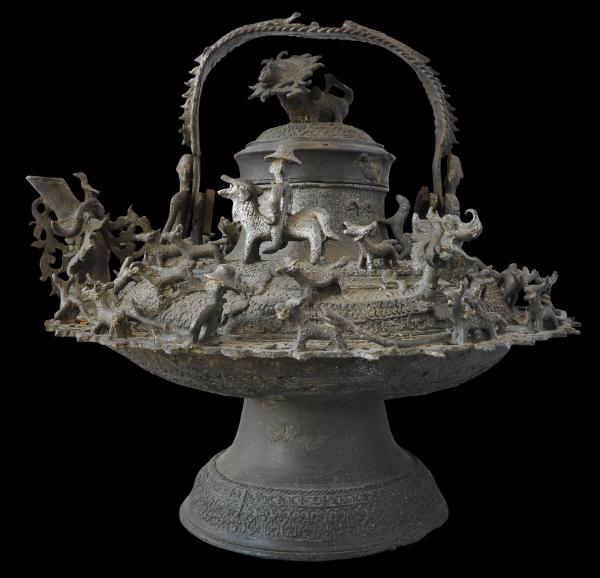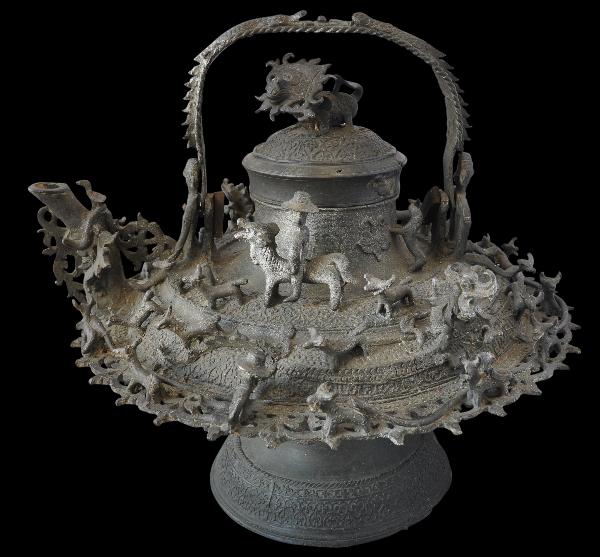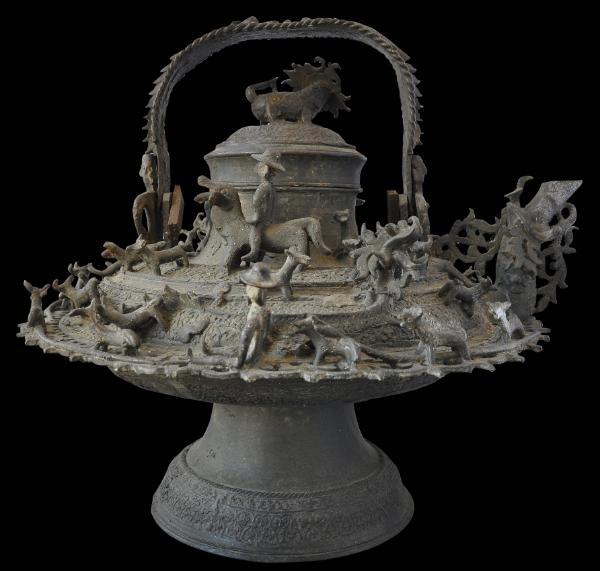
Borneo Kettle
Monumental Bronze Kettle Cast with Colonial Figures on Horseback
Borneo, Malaysia/Brunei
18th century
height: 53.5cm, width: 59cm
Ostensibly, this is a bronze kettle for holding water to be used for hand washing or drinking. In practice it is too heavy to be used for such a purpose. It also holds relatively little water on account of the open-work sides. In reality, such a large, costly item served as a visible display of wealth and power; an heirloom item to be owned and put on display by a local headman and his descendants among the tribes of Sarawak and Brunei on the island of Borneo. (Today, Borneo is shared between three countries: Brunei, the two Malaysian states of Sarawak and Sabah and the Indonesian provinces of East and West Kalimantan).
Cast using the lost wax process, it comprises a wide, flared foot; a wide, squat body; a broad neck with a lid that fits over it; and a prominent, high handle.
The flared foot has been elegantly cast with scrolling water plant motifs. The wide rim has a scalloped edge and a pierced outer rim. Numerous solid-cast hunting dogs or wolves stand around the rim, together with a long, thin snake figure that wraps right round the rim.
Several colonial figures with broad-rimmed hats or perhaps pith helmets astride horses are applied to the inner, higher section of the rim.
A plain neck leads to a lid that fits tightly and this is surmounted by a mythical dragon-lion figure. The lid is cast with further scrolling water plant motifs in keeping with the foot.
The supports for the high handle comprise two elongated, standing human-type figures on each side. The handle itself has been cast with serrations to both sides and with two crocodiles to the top.
The spout is an elaborate, fringed affair.
The kettle has a green-grey patina over its entirety. Unusually, casting faults and losses are few – one of the two crocodiles cast onto the handle is missing its head but this somewhat minor loss is lost in the profusion.
A similar kettle almost certainly by the same maker is illustrated in Chin (1980, p. 46) and is described as ‘a rare brass kettle decorated with moulded animals’. This kettle is in the Sarawak Museum.
Kettles of this size and type are indeed rare, and can be ascribed to the eighteenth century or earlier. (Nineteenth century examples are much smaller, more domes in form and with only a modest number of moulded animals and other figures applied.) Few are known in public collections; rarely do they come onto the market. This example is particularly interesting because of its depiction of colonial European figures, and the snake motif employed around the rim.
References
Chin, L., Cultural Heritage of Sarawak, Sarawak Museum, 1980.
Menut, N., L’Homme Blanc: Les Representations de L’Occidental dans les Arts non Europeens, Editions du Chene, 2010.
Provenance
UK art market
Inventory no.: 1847
SOLD

